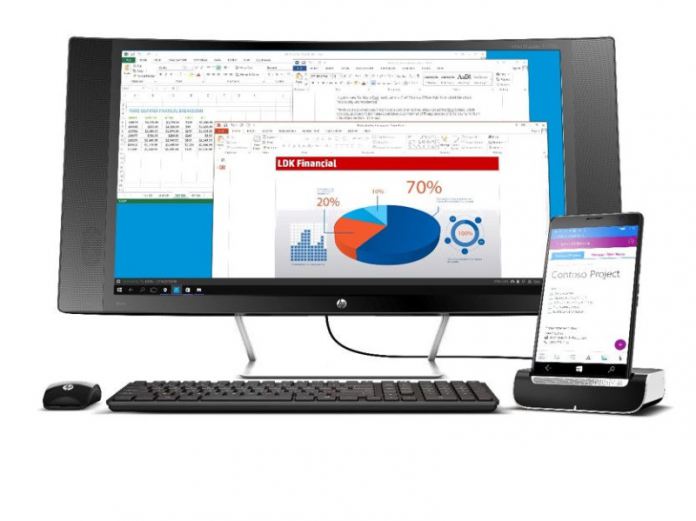1 Keyboard Limitations2 Changing Windows 10 Mobile
In the meantime, I am far more interested in whether a device like this even needs to exist? Are consumers asking for a so-called ultra-mobile PC market? The idea of a cellular product that can perform full PC tasks is appealing, but is such a device one that looks like a small laptop? I have doubts. Indeed, haven’t we already been through the downsized laptop phase with netbooks? Yes, new technology means we can go smaller and add smartphone capabilities into the mix. Also, ARM processing also opens a lot of doors to possibilities of full PC capabilities on the move. However, Microsoft plans for embracing ARM with Windows have more potential. Instead of bringing the PC to mobile, Microsoft and Qualcomm’s efforts can work the other way. Mobile devices can become more like PCs. They can run intensive tasks and through Microsoft’s Continuum features hook to any screen. I have long championed Continuum as Microsoft’s ace card for Windows 10 Mobile. Now that ARM-based capabilities are catching up, I expect the company to make a big play with Continuum through future Windows 10 Mobile builds. Naturally, all the pieces are falling in place for the company to release a Surface Phone, a device that could be the first true business-class smartphone.
Keyboard Limitations
It could be argued that to be completely business and productivity minded, a keyboard is necessary. However, in terms of a device that is essentially a smartphone with a keyboard, I don’t think we will ever get a typist’s dream. Even the excellent QWERTY decks we have used on BlackBerry devices have become a chore when work turns from the odd email or note to full documents. A UMPC is never going to deliver for users who type thousands of words per day, and neither is a smartphone. At the moment, that could be the biggest limitation of bringing business and PC capabilities to a smartphone. It will certainly be a compromise. It is worth mentioning that companies, including Microsoft, are deep into development on services that would ultimately result in keyboard use becoming old school. Back in September, Dave Coplin, Microsoft’s chief envisioning officer, told us that keyboards will eventually be replaced. He even says that it will happen soon: “We have these amazing computers that we essentially use like we’re still Victorians. The Qwerty keyboard is a great example of an old design being brought forward to modern day. We’ve not really evolved. We still use this sub-optimal design. […] We’re looking at technologies now like voice and gesture recognition, and facial tracking that may make the keyboard redundant.” As his position suggests, Coplin’s job is to, well, envisage. He is not coming from a completely baseless place either, he knows what Microsoft is doing and how development on other input methods is coming along. For now, though, I will stick to the opinion I had in 2016: “The question here is whether Coplin is right or wrong? Well, he is both. There is no doubt that the move towards more intuitive and automatic input methods has started. However, I have reservations that this will be a seismic shift that will happen “soon”. For example, I write on average 8000 words per day. I just don’t see an input method on the next horizon that could help me put those words down faster than typing. Voice input would be an obvious alternative, but I cannot speak the amount of words that I can type in a minute.” While those advancements Coplin speaks about are in development, any potential Surface Phone would be limited as a mobile PC because users would still need PC peripherals to use it in some circumstances.
Changing Windows 10 Mobile
If Microsoft can achieve its goal of bringing full Windows 10 capabilities to smartphones, there will be no need to keep Windows 10 Mobile. There would be a significant phase out as older devices would still need to run the mobile version of Windows 10. Moving forward, however, Windows 10 would just be truly universal across PC and mobile. It would deliver the same experience, the same app capabilities, and the same services across both. It is a compelling idea and one that I believe many business customers would be delighted with. Even consumers would welcome a mobile platform that could deliver PC kicks. A unified One Windows is what Microsoft wants. Fragmentation remains a big problem for the company’s aspirations, and how it puts the mixed pieces of the puzzle together will have the most profound impact on the likelihood of Windows ever thriving in the mobile space.




